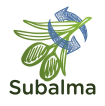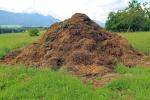IMECO Operational Group: Implementation of BAT for emissions control in slurry management and treatment
- Type Operational group
- Status Filled
- Execution 2021 -2023
- Assigned Budget 380.777,39 €
- Scope Supraautonómico
- Autonomous community Aragón; Cataluña
- Main source of financing CAP 2014-2020
- Project website https://coiaanpv.org/forodesarrollo/go-imeco/
Description
The innovative project aims to implement BATs for emissions control in slurry storage and its application to crops, revaluing manure as biogas and promoting the circular economy in the agricultural sector.
Objectives
- Assessment of ammonia and greenhouse gas emissions from slurry storage ponds and development of a low-cost anaerobic digester for biogas utilization and emissions mitigation.
- Implementation of a nutrient-binding crop in the rotation to retain residual nutrients when the soil is bare.
- Characterize the capture crop in relation to its potential to produce biogas (anaerobic biodegradability) and its use as a co-substrate in the anaerobic digestion of slurry.
- Agronomic assessment and evaluation of ammonia emission reduction with a disc injection system and hanging tubes plus acidification in the application of digestate as fertilizer in extensive crops
- Agronomic assessment and evaluation of ammonia emission reduction through fertigation with liquid digestate fraction in extensive crops
Results
- Implementation of floating octagonal pieces to cover the slurry pond and control emissions. Reductions in ammonia and other GHG emissions range from 5% to 55%, depending on parameters such as temperature, slurry characteristics, and pond fill.
- Implementation of the nutrient-binding crop, ryegrass, proving to be a good practice for retaining nutrients and reducing their leaching.
- Increase in methane production by 38% when slurry is mixed with the ryegrass capture crop
- Ammonia emissions were reduced by more than 70% when digestate was applied with acidification, while the reduction with the disc injection system ranged from 33% to 40%.
- Reduction of ammonia emissions throughout the entire crop cycle by 28% in wheat and 70% in corn. In addition, fertigation made it possible to reduce the doses of nitrogen applied and reduce excess nitrogen in the system.
Contact information
- Coordinator/entity name: IRTA
- Coordinator/entity email: silvia.fernandez@irta.cat
Beneficiaries
- CATARO
- S.L.
- CIFA - CENTRO DE INVESTIGACIÓN Y FORMACIÓN AGRARIAS DE CANTABRIA
- Instituto de Investigación y Tecnología Agroalimentaria (IRTA)
- PEYRET S.C






